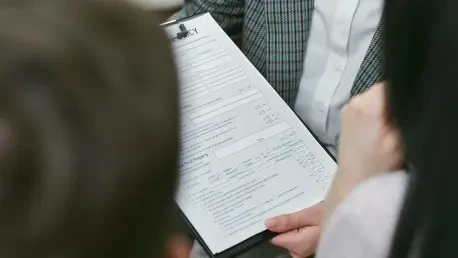In the complex landscape of insurance disputes, a recent decision by a Florida appellate court has brought renewed attention to the interplay between policy limits and bad faith claims in insurance litigation. This decision, involving the case of State Farm versus policyholder Catherine Hudnall, intricately balances the jury’s assessment of damages with existing insurance policy limits, providing valuable procedural clarity. The pivotal matter revolved around capping the verdict to Hudnall’s $100,000 policy limit despite a jury’s determination of greater damages. Such cases underscore the critical need for insurers to meticulously navigate these intricate legal waters while ensuring compliance with policy provisions and judicial precedents, particularly when the specter of bad faith claims looms over proceedings.
Adhering to Policy Limits in Verdicts
Preserving Legal Norms While Respecting Jury Assessments
The court’s decision does not merely focus on aligning verdicts with policy limits but also on upholding the sanctity of jury determinations. By adjusting the relevant judgment to fit within Hudnall’s $100,000 policy limit, the court adhered to established legal norms, as echoed in the Florida Supreme Court’s 2016 ruling in Fridman v. Safeco. This precedent allows a jury to assess full damages but restricts court judgments to policy limits pending the resolution of any bad faith claims. Such an approach ensures that insurers cannot be unfairly burdened with paying damages beyond their contractual obligations before the legal process surrounding potential bad faith claims is complete.
This legal framework provides insurers with a strategic approach to preserving their legal defenses while recognizing the potential validity of claims stemming from bad faith actions. It is a delicate balance, designed to not only honor the determinations made by juries but also to preserve the legal process’s integrity, ensuring that all claims are assessed fairly. The framework serves as a guiding principle for insurers, particularly those in the auto insurance sector, providing clarity on managing claims that could extend into bad faith litigation.
Importance for Insurers
This ruling serves as an essential blueprint for insurance companies managing similar disputes in the future, signaling the importance of maintaining transparency and discipline in processing uninsured motorist claims and potential bad faith allegations. Insurers are reminded to be vigilant in their strategies, ensuring judgments remain within policy confines, even as they continue to recognize and respect jury verdicts. Such careful navigation helps mitigate the risks of increased liabilities and ensures preparedness for situations where bad faith violations may be substantiated in subsequent legal findings.
Moreover, this decision highlights an insurer’s need to consider the broader implications of potential shifts in judicial interpretations that might impact how policy limits are managed in bad faith claim scenarios. As legal precedents evolve, insurers must remain agile, adapting their procedures and strategies to align with the latest judicial guidance, thereby safeguarding their interests and promoting fair outcomes for policyholders and stakeholders alike.
Procedural Guidance for Insurers
Managing UM Claims and Bad Faith Allegations
The procedural guidance emerging from this decision emphasizes the necessity for insurers to manage uninsured motorist claims with precision, especially when bad faith allegations are present. The appellate court’s ruling reinforces the requirement for insurers to interpret policy limits strictly, ensuring that any ongoing litigation or pending bad faith claims do not prematurely trigger payments exceeding outlined policy terms. This approach not only preserves legal clarity but also safeguards insurers from undue financial exposure, pending conclusive legal findings.
Insurers must also consider the potential ramifications of appellate decisions that refine procedural standards and approaches to handling such disputes. By embedding careful legal strategies and maintaining awareness of evolving legal norms, insurers can better position themselves to defend against claims that might otherwise challenge their financial and contractual positions. These strategies are essential in minimizing exposure and maintaining compliance with the dynamic legal landscape governing insurance claims and policy limitations.
Ensuring Compliance with Legal and Policy Frameworks
Adhering to policy limits within the context of ongoing legal disputes and potential bad faith claims necessitates a well-coordinated legal approach by insurers. The court’s decision showcases the importance of aligning judgments with the policy framework, ensuring that any compensation awarded does not exceed established policy limits unless justified by thorough legal validation of bad faith. This careful legal orchestration helps insurers maintain defensible positions and effectively manage liabilities, ensuring that the juridical process’s integrity is upheld.
In essence, these measures provide a balanced pathway for navigating the intricate relationship between jury verdicts, policy limits, and the potential for bad faith litigation. Such an approach ensures that while jury assessments are respected, they are concurrently aligned with legal and contractual frameworks. This dual focus helps insurers maintain compliance while remaining adaptable as legal precedents continue to evolve.
Charting a Course for Future Disputes
The court’s decision emphasizes the sanctity of jury verdicts and aligns rulings with policy limits. By modifying the judgment to Hudnall’s $100,000 policy cap, the court adhered to established norms, resonating with the Florida Supreme Court’s 2016 decision in Fridman v. Safeco. This precedent permits a jury to determine full damages but confines court rulings to policy limits until any claims of bad faith are resolved. This method ensures insurers aren’t unjustly compelled to pay amounts exceeding their contractual responsibilities before the legal process addressing potential bad faith claims is completed.
This legal strategy offers insurers a method to safeguard their defenses, recognizing claims that might arise from bad faith actions. It’s a careful balance aimed at respecting jury determinations while preserving the integrity of the legal process to ensure fair assessment of all claims. This framework acts as a guiding principle, especially for auto insurers, providing clarity in managing claims that might evolve into bad faith disputes.









